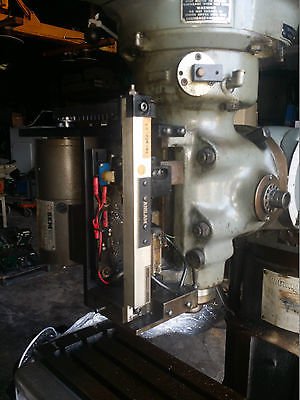Hey folks, I'm prepping for the next round of upgrades for the bridgeport retrofit.
I have the X/Y ballscrews, and just need to make a bolt circle adapter plate (probs this weekend) and we'll be rocking and rolling.
So my questions are about the additions I plan on doing while I'm at it:
1. I'm adding inductive "home" sensors and finally limit switches to the X/Y, and I've had noise issues with switches in the past, is there anything I need to specifically watch out for with inductives?
2. Probably for Jim: but if anyone has done a ballscrew-to-Z axis conversion for the quill I'd like to see it, it looks like I could gut the internals and pull the Z down by the collar around the depth gauge, so I could still use it manually sometime, but I'm not sure if that is the way to go since many conversions I've googled have that whole area inside a box its tough to see what is going on there.
3. I'm also making a big old fixture/sub plate, and am looking for any ideas to be able to place it consistently /without/ drilling and putting pins in the table. My thought was to make T nuts with females for the pins above setscrews to secure them to locate and then regular old bolts to tie it down afterwards.
I have the X/Y ballscrews, and just need to make a bolt circle adapter plate (probs this weekend) and we'll be rocking and rolling.
So my questions are about the additions I plan on doing while I'm at it:
1. I'm adding inductive "home" sensors and finally limit switches to the X/Y, and I've had noise issues with switches in the past, is there anything I need to specifically watch out for with inductives?
2. Probably for Jim: but if anyone has done a ballscrew-to-Z axis conversion for the quill I'd like to see it, it looks like I could gut the internals and pull the Z down by the collar around the depth gauge, so I could still use it manually sometime, but I'm not sure if that is the way to go since many conversions I've googled have that whole area inside a box its tough to see what is going on there.
3. I'm also making a big old fixture/sub plate, and am looking for any ideas to be able to place it consistently /without/ drilling and putting pins in the table. My thought was to make T nuts with females for the pins above setscrews to secure them to locate and then regular old bolts to tie it down afterwards.

